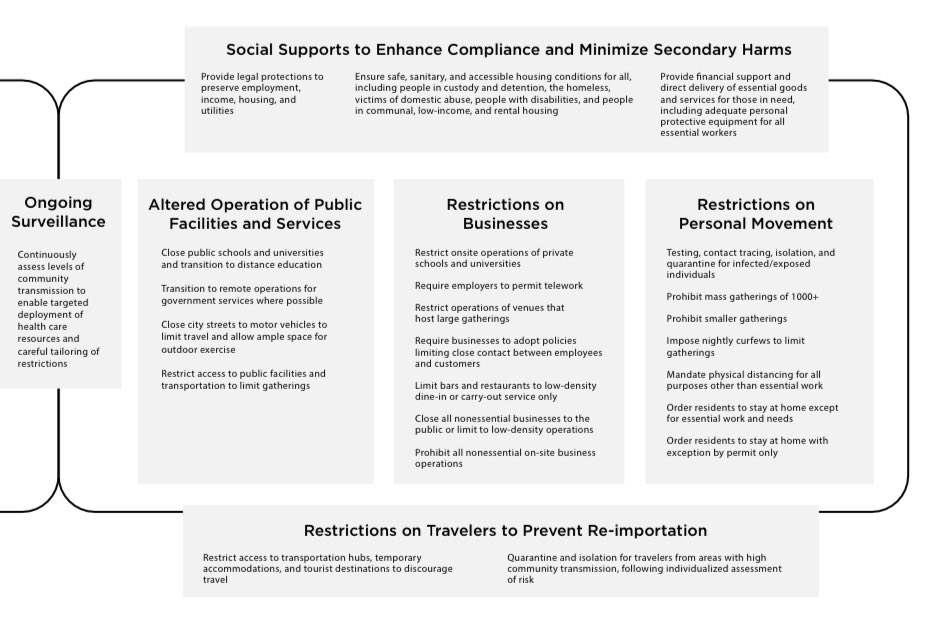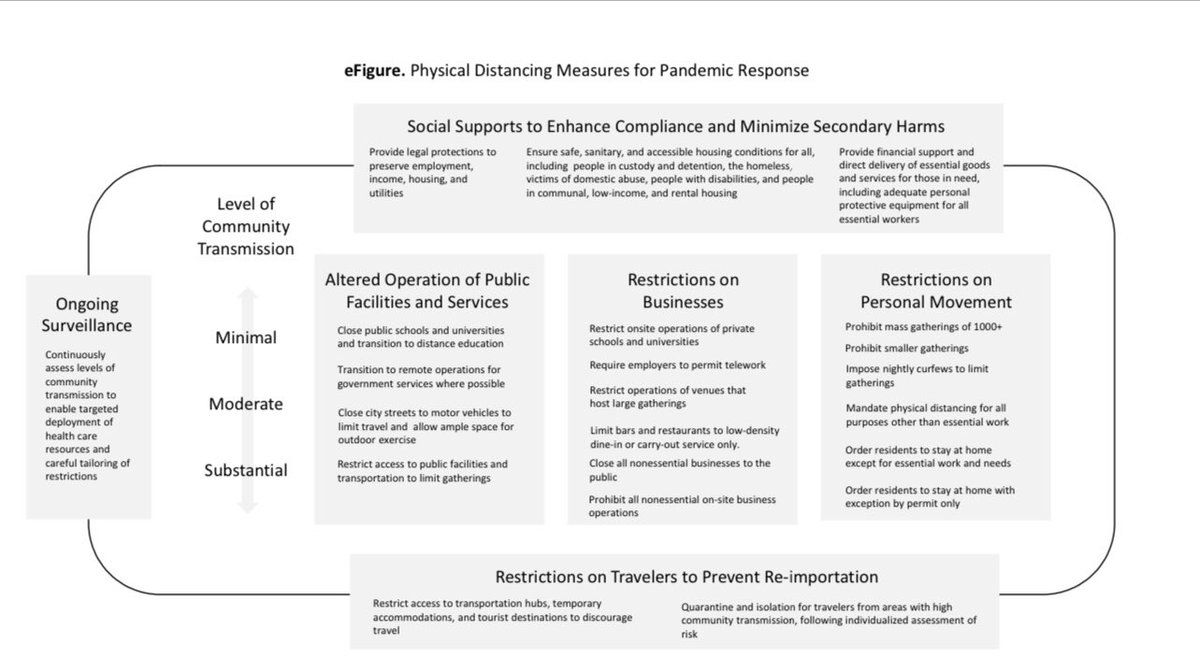More helpful to think of a ladder or a dial.
We'll need to gradually adjust our levels of physical interaction up & down from time to time & place to place.
/1
/2
/3
/4
/5
/7
/8
/9
/10
/11
/12
/13
/14
/15
/16
/17
- Clear communication & discussion of goals
- Management of expectations re possible retightening
- Widespread public trust & cooperation, which are eroded when the harshest restrictions are left in place too long.
/18
/19





